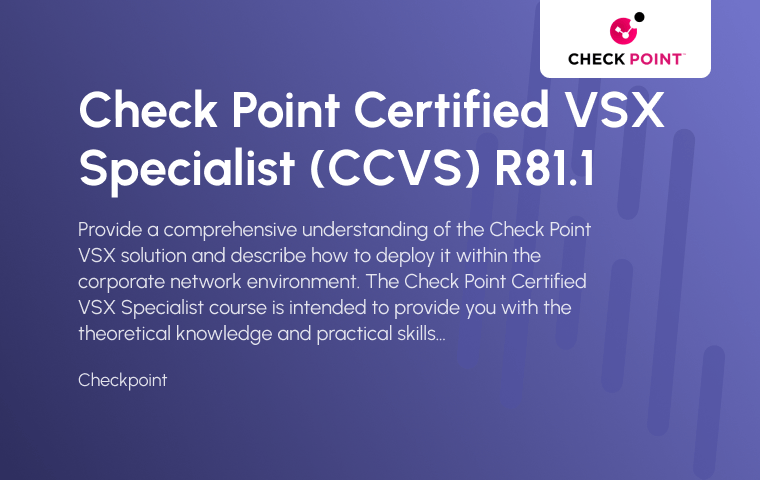
Check Point Certified VSX Specialist (CCVS)
The Check Point Certified VSX Specialist course is intended to provide you with the theoretical knowledge and practical skills needed to deploy, manage, and troubleshoot the Check Point VSX environment.
Provide a comprehensive understanding of the Check Point VSX solution and describe how to deploy it within the corporate network environment.
Virtual Classroom Live
Prerequisites
Check Point CCSA and CCSE Certification
Target Audience
What You’ll Learn
Course Outline
COURSE OBJECTIVES
- Explain the benefits of virtual network security.
- Understand the basic functions, components, and advantages of VSX technology.
- Examine the VSX management infrastructure and understand how traffic flows within a VSX network.
- Discuss options for deploying VSX technology within various types of organizations.
- Understand how to install and configure VSX Gateways and Virtual Systems.
- Describe different routing schemes and features that are available to use within the VSX environment.
- Understand how to deploy additional VSX networking configurations that may be required in the environment.
- Understand the differences between deploying physical Security Gateway Clusters and VSX Gateway Clusters.
- Understand how Virtual System Load Sharing works to enhance VSX network performance.
- Understand how to use the VSX Provisioning Tool to add and remove virtual devices.
- Recall how CoreXL technology enhances Security Gateway performance and recognize how to use the technology in a VSX environment.
- Understand how to employ tools for optimizing resources allocated in a VSX environment.
- Identify various VSX command line tools commonly used to retrieve information and perform configuration changes.
- Understand how to use VSX utility commands to perform various maintenance tasks for the VSX environment.
- Understand how to troubleshoot and debug issues that may occur in a VSX environment.

